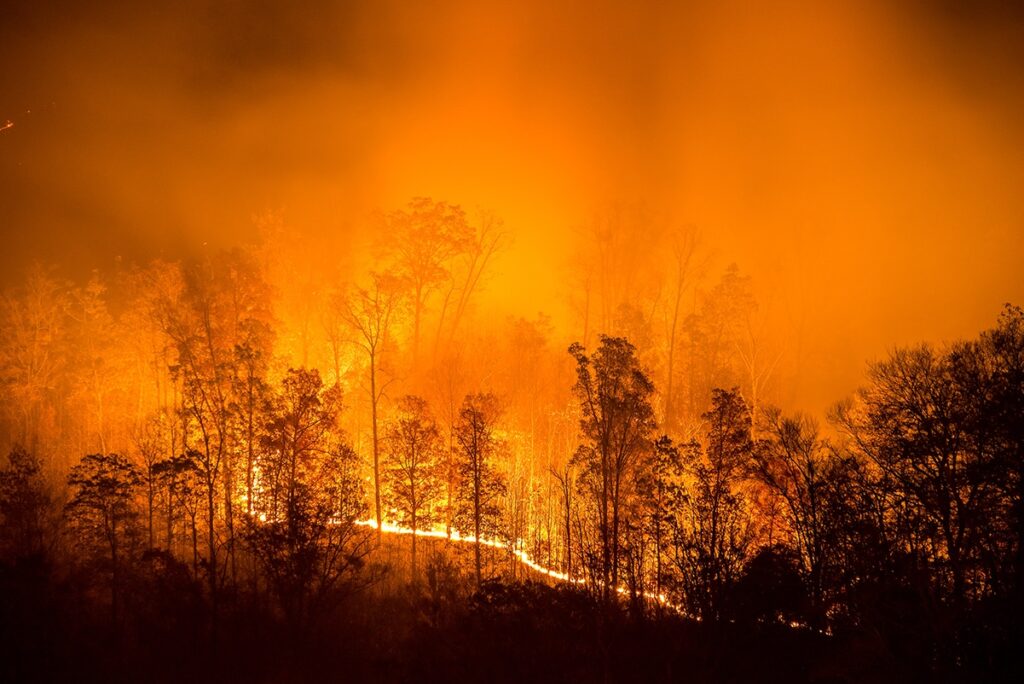IBHS Science-based Prep Guide Helps Homeowners Be Wildfire Ready this Labor Day Weekend


Richburg, S.C., August 31, 2021 – While wildfires have already impacted too many communities this year, the downslope wind events of the fall known to exacerbate fire conditions are still ahead. The Insurance Institute for Business & Home Safety (IBHS) encourages homeowners to use the upcoming three-day Labor Day weekend to increase their home’s wildfire preparedness. The non-profit’s Wildfire Ready guide can help homeowners get started by prioritizing the most critical actions necessary to improve the wildfire-resistance of their home based on the latest wildfire science.
“Now is the time for homeowners to take a good look at their home, finish up the seasonal maintenance, and take the additional actions that we know will drive down wildfire risk,” says Roy Wright, president and CEO of IBHS. “Invest the time to give your home a better chance of surviving if a wildfire reaches your community.”
During a wildfire, up to 90 percent of homes damaged or destroyed were first ignited by embers. Yet simple actions around the house can reduce the chance of ignition.
“In a wildfire, wind-blown embers can accumulate on and around a home more than a mile away from the flames. Homeowners can take specific steps around their home to ensure embers don’t have a hospitable place to land and ignite,” says Daniel Gorham, P.E., a firefighter and research engineer at IBHS. “Protecting your home from wildfire is all about preventing ignition.”
The Wildfire Ready guide takes homeowners through the critical actions needed to address wildfire risk, and then progressively guides homeowners through additional ways to build further resilience. Homeowners should start here:
- Ensure the roof is Class A fire-rated
- Create a 0-5 foot home ignition zone buffer around the home
- Remove items under a deck
- Add or upgrade vents to include 1/8 inch or finer metal mesh screens.
While the roof is a major component of the home, nearly all asphalt shingles currently on the market are Class A fire-rated. Three-quarters of all homes in the United States have a Class A asphalt shingle roof.
Additionally, clay and concrete tile roofs are also Class A. That means most homeowners won’t need to address this potentially costly repair and can immediately advance to the next vulnerability.
“Research on past fires has demonstrated there is no single, repeatable, absolute correlation between damage level and individual building component, like the roof or type of siding, making it important for homeowners to take multiple mitigation actions to give their home the best chance during a wildfire,” explains IBHS research engineer Dr. Faraz Hedayati.
Wildfire Ready sets the starting line for each homeowner to understand their progress on the road to wildfire resilience. Homeowners can use the augmented reality app, Wildfire Ready Virtual, to understand the impact of these actions on a home. The app brings to life the critical actions needed to create a wildfire-resistant home.
With the first comprehensive look at the closely built suburban context where wildfires are too frequently becoming catastrophic, the Suburban Wildfire Adaptation Roadmaps detailed the wildfire vulnerabilities of eight components of a suburban home. The Roadmaps informed the Wildfire Ready guide for homeowners, which provides four clusters of actions for homeowners prioritizing the actions that will make the most meaningful reduction in risk to their home.
“Action from every homeowner is critical to solving the wildfire problem. Yet, there are other factors at play beyond your property line and those are the pieces we are turning to now,” adds Wright. Now, the Institute is developing Wildfire Prepared Home to outline how the wildfire resilience of a property can be meaningfully distinguished from unmitigated or partially-mitigated properties. The standard will build on the Roadmaps by focusing on the most essential measures for homeowners based on the science in the Roadmaps and expanding the view out to identify the neighborhood characteristics significantly impacting a home’s risk. A draft of the framework, which will build from the fundamental mitigation actions outlined in Wildfire Ready, will be published at wildfireprepared.org as it is developed.
Recent Posts
NOAA Weather
Tampa, FL
Last Updated on Jun 5 2024, 6:53 am EDT
Weather by NOAA
Current Conditions: Fair
Temp: 77°F
Wind: SE at 5mph
Humidity: 88%
Dewpoint: 73.0°F
 National Hurricane Center
National Hurricane Center
- The Atlantic hurricane season runs from June 1st through November 30th. April 20, 2025The Atlantic hurricane season runs from June 1st through November 30th.